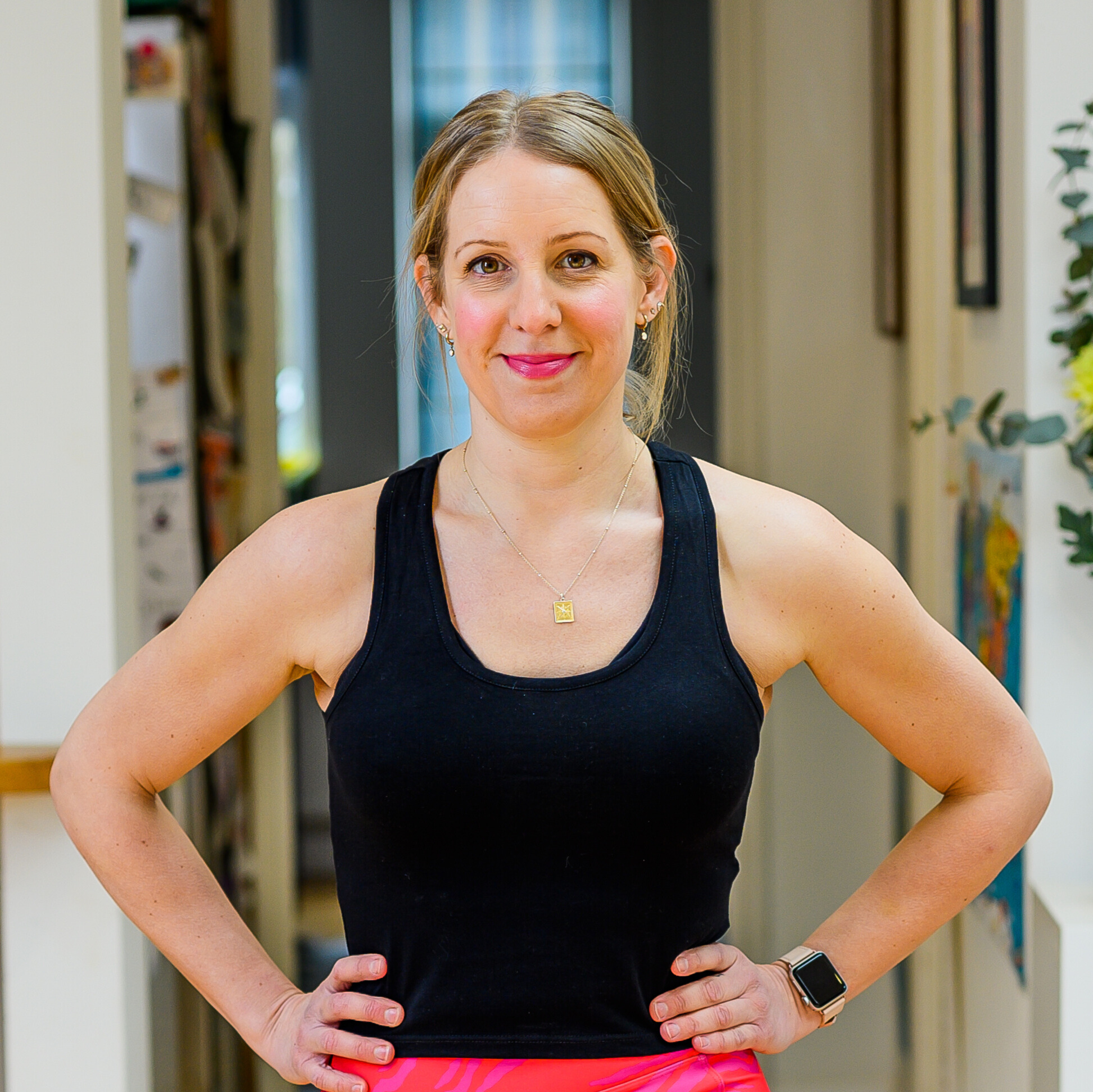Build core strength with this six-move resistance band ab workout
Use this short resistance band ab workout to develop your core, improve your posture, and promote stability


Developing your core doesn't have to mean endless repetitions of sit-ups and crunches. Those moves are effective, but this resistance band ab workout is a more varied way to build muscle without weights.
It's important to remember that there many reasons to get a stronger core aside from developing a lean stomach or six-pack abs. A strong core supports your spine and makes daily activities easier, like bending down or standing up.
So, if you want to strengthen your midsection, improve your balance, and avoid back pain, it's worth making this six-move resistance band ab workout a regular part of your workout routine.
The short session was designed by Helen O'Leary, a chartered physiotherapist and clinical director at Complete Pilates in England, who says you only need a set of the best resistance bands to get started.

Helen O'Leary is a chartered physiotherapist, Pilates instructor, and director of Complete Pilates in London, England. She completed a Polestar Pilates Rehabilitation course in 2010 and began her career as a physiotherapist in professional men's rugby and with Cirque du Soleil before launching Complete Pilates.
Six-move resistance band ab workout
According to O'Leary, these affordable bands are an excellent alternative to weights as "they don't take up any space and they are so lightweight you don't have to worry about moving heavy kit around."
"You can even take them on holiday, so you don't have to break up your exercise routine. [Plus], you use it in the same way you might a dumbbell and to provide resistance in a way that a weight can't."
As with any workout, it's essential first to do some stretching exercises to warm up the muscles ready for training. Make sure you spend the same amount of time or slightly longer cooling down afterward, too.
Start your week with achievable workout ideas, health tips and wellbeing advice in your inbox.
1. Pallof press
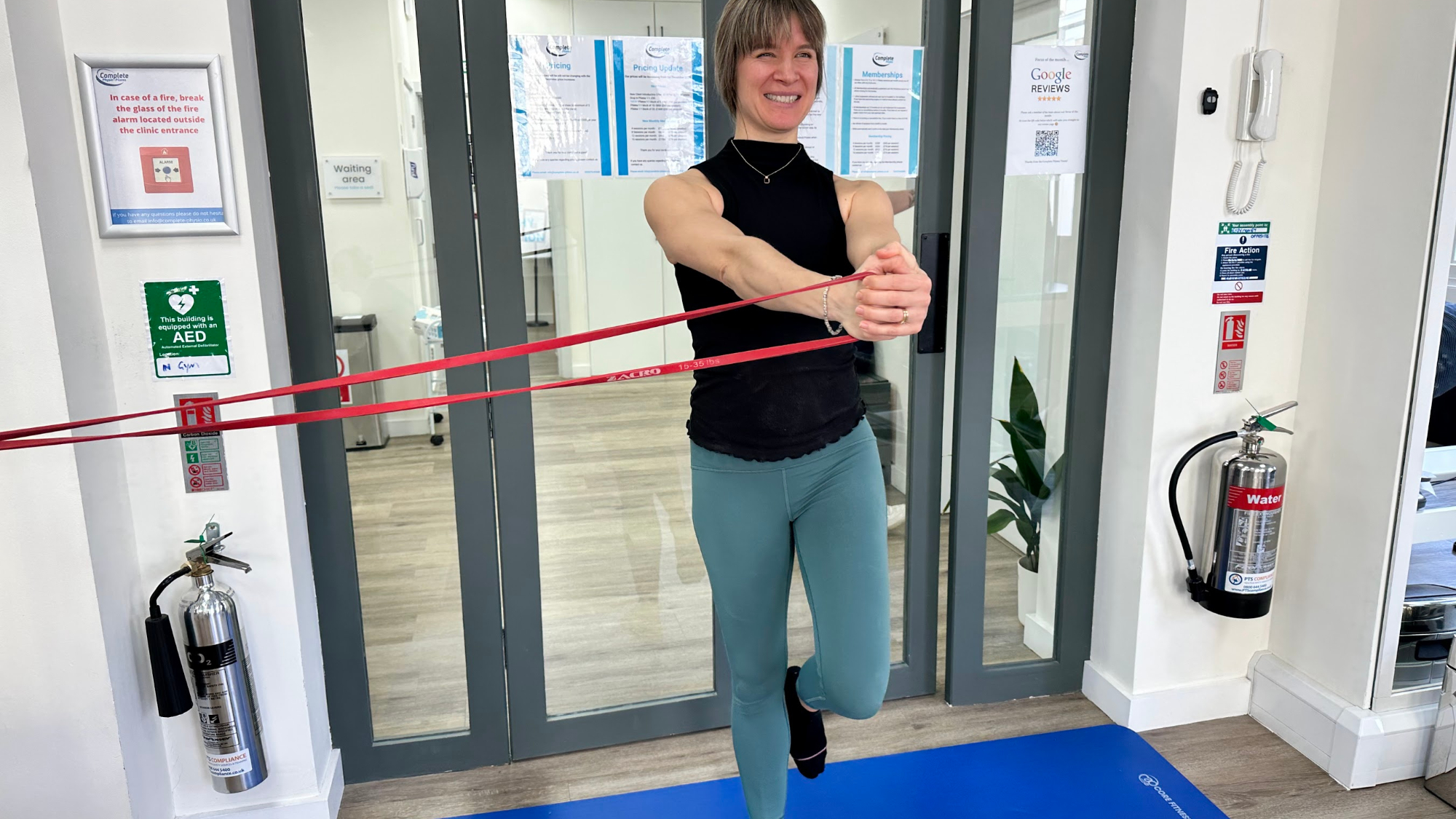
"The Pallof Press is a great exercise for working all the stabilizing muscles of the body – including abdominals and back muscles," says O'Leary. "You're working your muscles in a different way to other exercises as this is about keeping still and resisting a rotation force.
"This way of working where no change in muscle length occurs is called isometric exercise - the muscles contract but remain static. You will most likely feel this in your oblique (side ab) muscles and your lower abdominals, but there are lots of smaller deeper muscles that are also working away throughout the torso."
- Secure your resistance band to a post or other suitable sturdy object (not something that will fall over!).
- Stand side onto the post, holding the band in both fists close to your chest.
- Stand on one leg. If you cannot balance, adopt a stance with feet slightly wider than hip-width apart and the knees slightly bent.
- Straighten your arms out in front of you.
- If the band has enough tension, you should notice that as you straighten the arms, the band will pull you round to one side.
- You must resist this movement and keep your shoulders and hips pointing to the front.
- Pull your arms back in again.
- Repeat 15-20 times for three sets with up to two minutes of rest in between.
2. Standing oblique side bends with band

"This exercise targets the oblique muscles, which are responsible for twisting and side bending movements but also work to resistance rotation — as in the Pallof Press," says O'Leary.
- Secure the band underneath both feet.
- Keeping your hips still, bend to one side, from your waist.
- Grip hold of one end of the band, and make sure there is some tension in the band.
- Stand up straight, pulling the band as you go.
- Slowly lower back to the start position.
- Make sure you adjust the band length to have enough slack to stand up straight, but you feel tension through most of the move.
- Repeat three sets of 15-20 repetitions with up to two minutes of rest in between.
3. Travolta in high kneel

"Named after the legendary Saturday Night Fever movie star John Travolta, this exercise should be easy to remember. It combines rotation at the core with arm strength," explains O'Leary.
"The high kneeling position is great for challenging core stability, as it leaves little room for making compensatory shifts with your feet as you would in standing."
- Secure the band low, to one side of you. If you don't have anywhere to secure it, hold it in one hand instead.
- Take hold of the band with your opposite arm, holding it close to your hip.
- Pull the band up and out in a diagonal.
- As you pull, twist at your waist to follow the body's movement.
4. High to low wood chops in half kneel
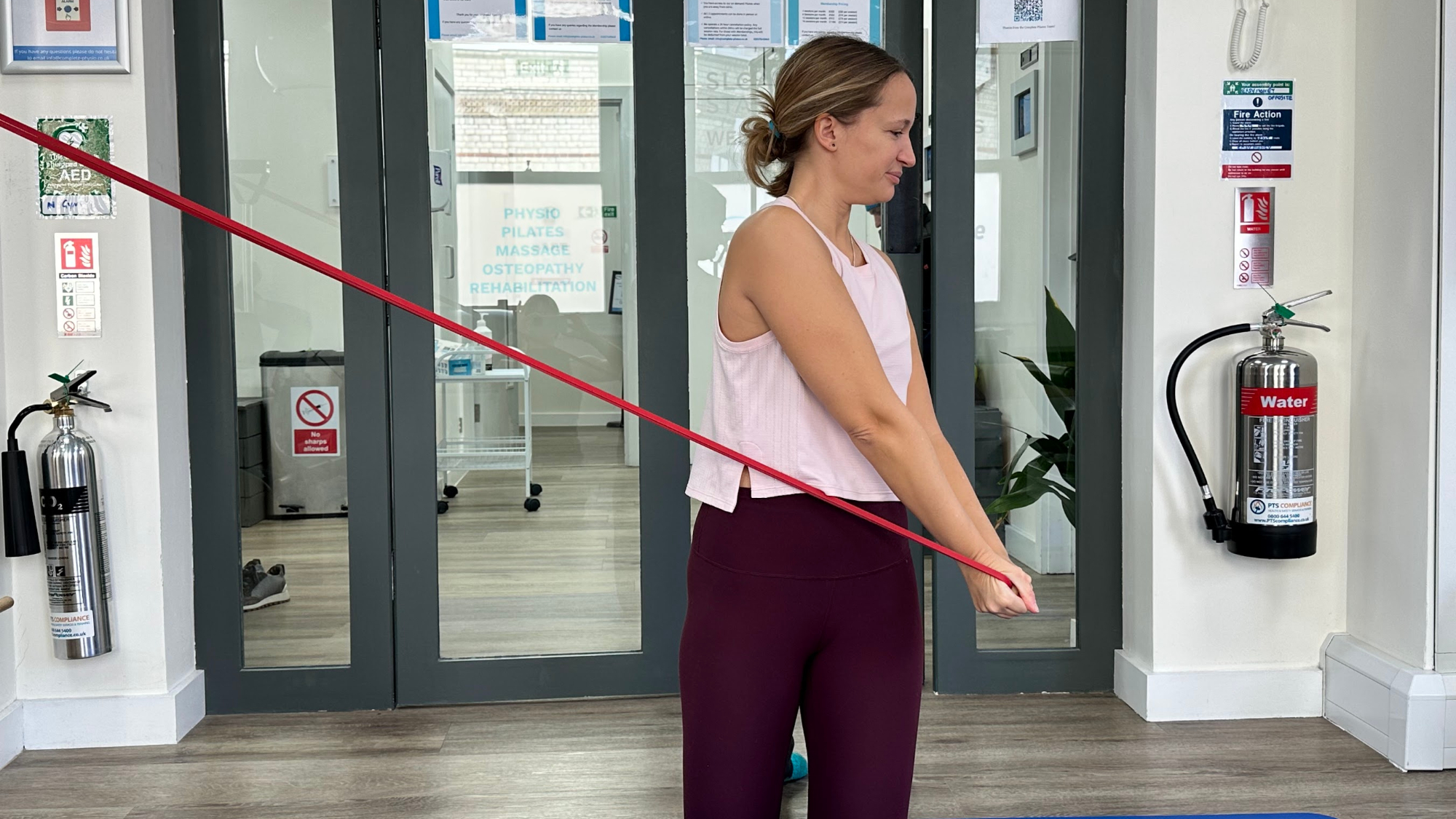
"This works the same movement as the Travolta, but the resistance goes in the opposite direction. It still works rotational strength of the body but adds a bit of forward flexion, which will work the upper abs a bit, too."
- Secure the band up high — tying a knot in one end and throwing it over the top of a closed door is an excellent hack for home.
- Start in your high kneeling position.
- Hold the band in two hands, with your arms extended and your body pointing towards where the band is secured.
- Pull the band down and across to the opposite hip.
- Repeat three sets of 15 - 20 repetitions, with a rest of up to two minutes in between.
5. Hundreds
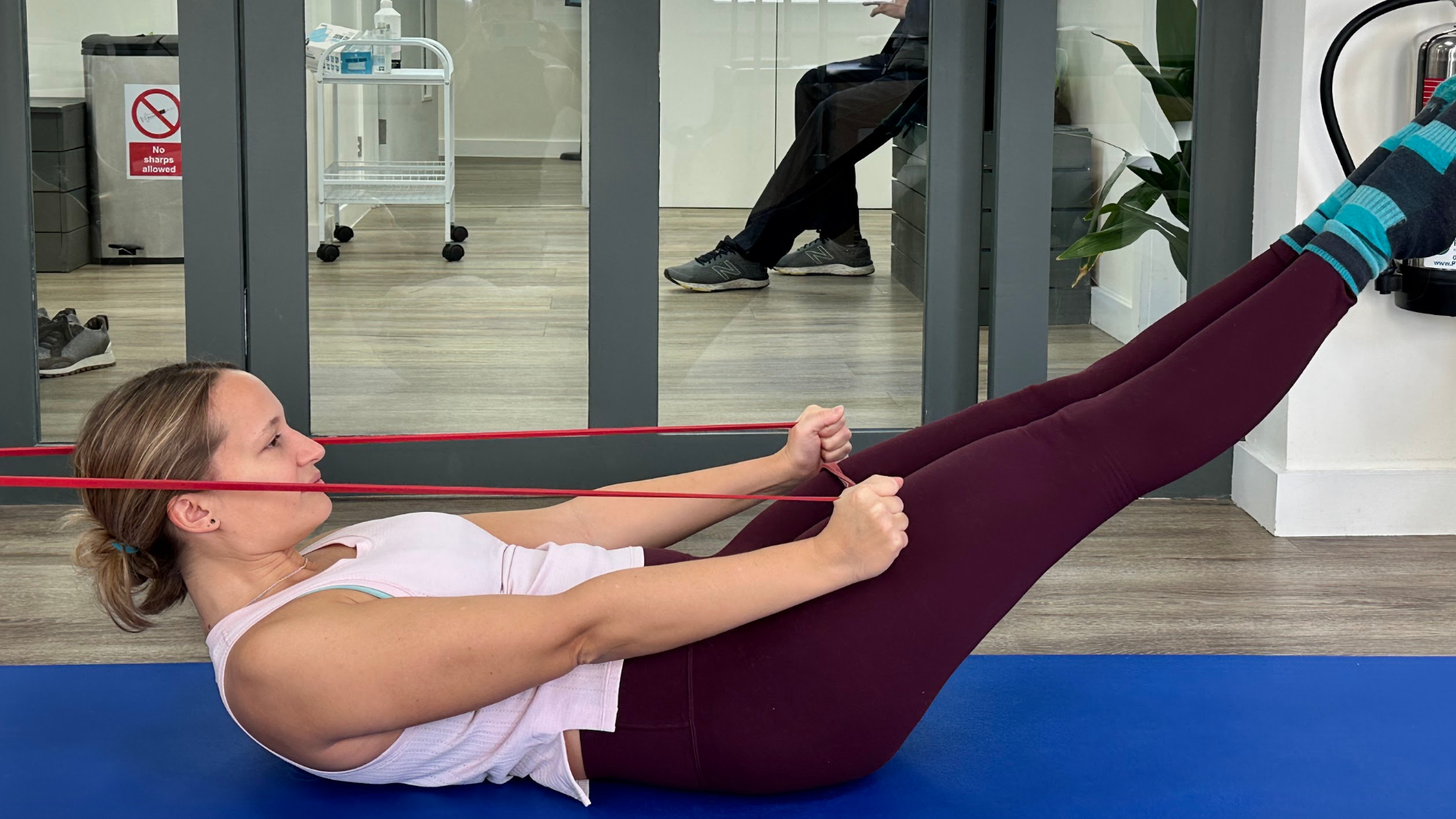
O'Leary says: "This exercise is an adaptation of a Pilates exercise normally performed on the reformer. This is great if you want to feel the same kind of work as you do in a classic crunch."
"Make sure your lower stomach doesn't pop into a 'dome' or your lower back arches away from the floor. If this happens, try the standard move to build strength before progressing to the variations.
- Lie on your back on the floor with your legs bent up and shins parallel to the floor. Have the band secured behind you.
- Grip the ends of the band with each hand. Hold the band overhead with your arms straight.
- Pull the band down, and bring your arms slightly to the sides. As you do, curl your upper body off the mat.
- As you curl up, extend one leg out in front of you to make the exercise more challenging.
- To increase the effectiveness, try extending both legs out.
- Repeat three sets of five to eight repetitions with up to two minutes of rest in between.
6. Double leg lower and lift
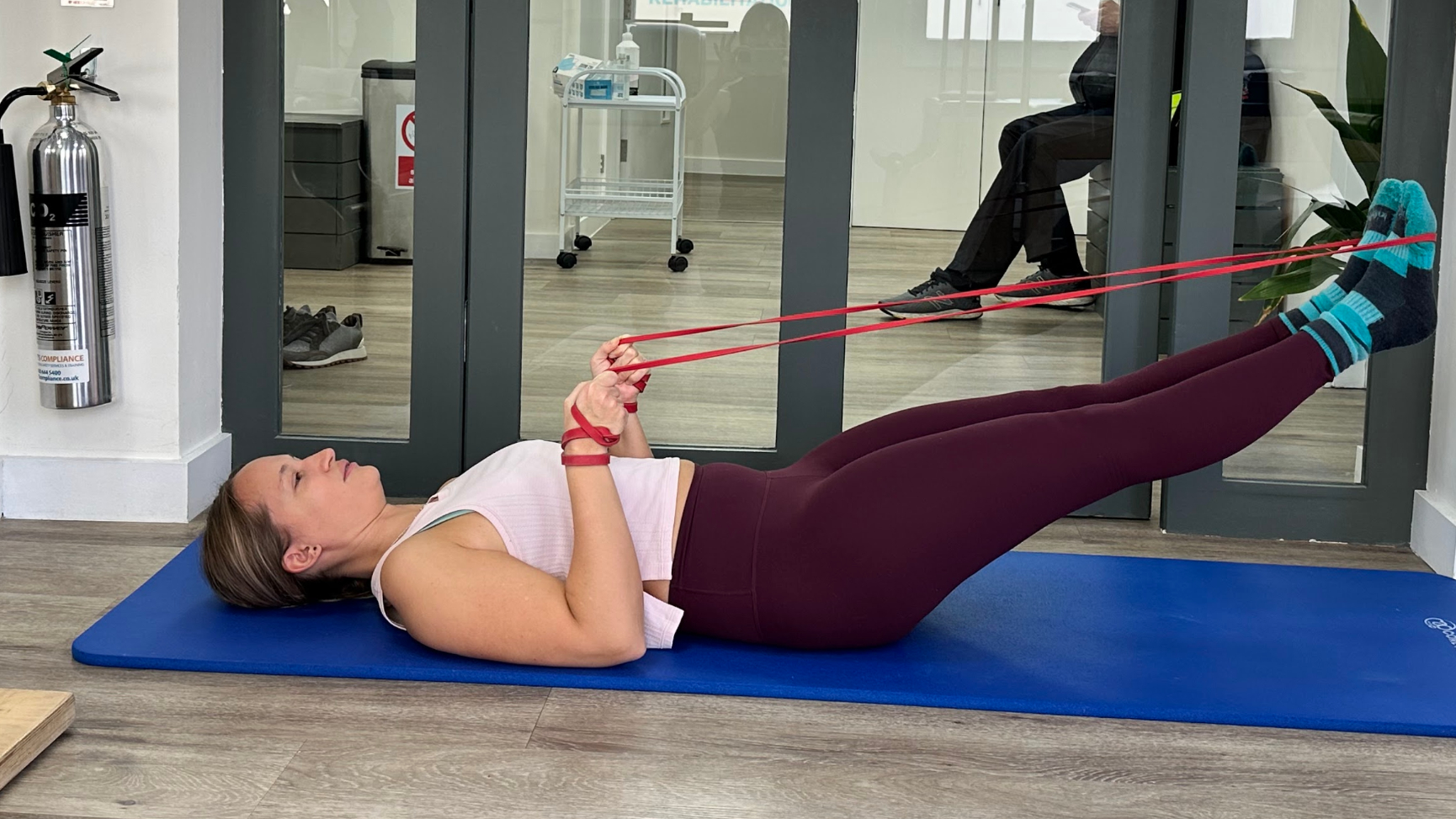
"This exercise is another adaptation of a Pilates reformer exercise. You'll need a really strong band for this one. It uses the weight of the legs to work the abdominals.
"But the resistance band helps to reduce the load of the legs, making it more likely that you'll perform this advanced exercise effectively and without straining your back. If your back hurts, use a stronger band."
- Lie on your back with a strong band looped around your feet and hold onto the free ends of the band.
- Start with your legs pointing towards the ceiling or as far as you can reach. If you have tight hamstrings, this will be more challenging.
- Make sure the back of your pelvis is resting fully on the floor.
- Keeping good tension on the band, start to lower both legs.
- Only lower the legs as far as you can stop your back from arching away from the floor.
- There should be no strain in your back muscles, and you should feel this in the abdominals.
- Lift the legs back up to the start position.
- Repeat three sets of five repetitions with a two-minute break in between.
This is a great routine to add to your weekly workout schedule, but you still alternate which areas of the body you use each day to give your muscles time to recover between workouts.
If you enjoy working with bands, consider using the best chest workouts with resistance bands to strengthen your upper body. Or develop your lower body with some bodyweight leg workouts instead.
Maddy Biddulph is a journalist specializing in fitness, health and wellbeing content, with 26 years in consumer media working as a writer and editor for some of the bestselling newspapers, magazines and websites in the US and UK, including Marie Claire, The Sunday Times and Women’s Health UK.
She is a CIMPSA-certified PT and works one-on-one with clients, as well as running Circuits Club classes which mixes cardio and strength training and chair-based exercise classes for seniors.
